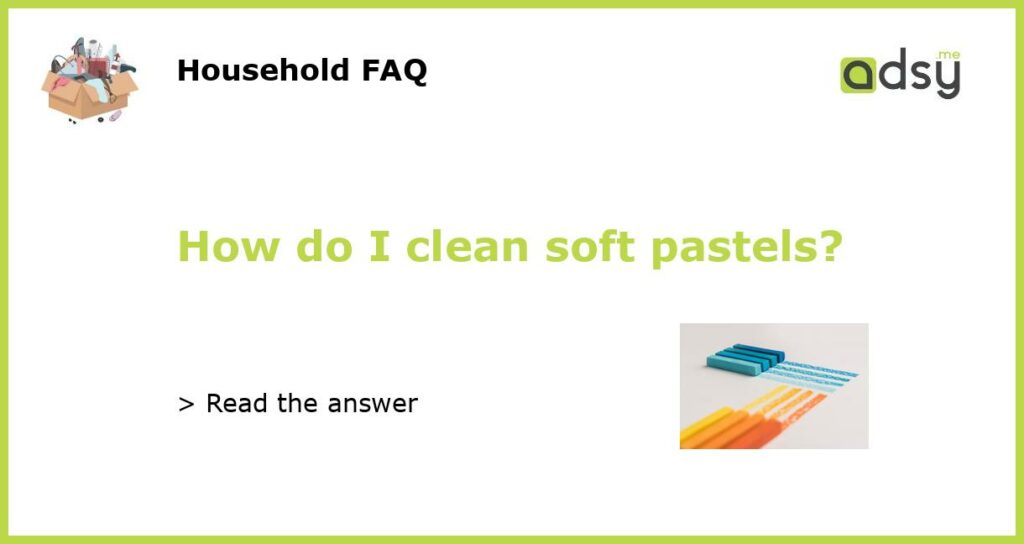What are soft pastels?
Soft pastels are a popular artist’s medium that offer vibrant colors and a smooth, blendable texture. They are made from a combination of pigment, chalk, and a binder that holds the pigment together. Soft pastels come in a variety of forms, including sticks, pencils, and pans. They are a versatile medium that can be used to create a range of effects, from delicate, detailed drawings to bold, expressive strokes. However, like any art material, soft pastels can become dirty or contaminated with use. Cleaning your soft pastels regularly can help maintain their purity and ensure vibrant, consistent results.
Why is cleaning soft pastels important?
Soft pastels are made from powdered pigment, which can easily transfer from one pastel to another. This can result in colors becoming muddled or polluted, affecting the purity and vibrancy of your artwork. Additionally, dust and debris can accumulate on the surface of your pastels, which can further contaminate the colors and make them appear dull or muddy. Cleaning your soft pastels regularly is essential to maintain the integrity of your colors and ensure the best possible results in your artwork.
How to clean soft pastels
Cleaning soft pastels should be done carefully to avoid damaging the delicate pigment. Here are some steps you can follow to clean your soft pastels:
1. Dust off the surface: Start by gently tapping or brushing the surface of the pastels to remove any loose dust or debris. This can be done using a soft brush or a piece of clean cloth.
2. Erase any visible marks: If there are any visible marks or smudges on the surface of your pastels, use a kneaded eraser to gently lift them off. Kneaded erasers are soft and pliable, making them ideal for removing marks without damaging the pastel.
3. Clean the sides of the pastels: The sides of the pastels can also become contaminated with pigment and dust. Use a clean cloth or cotton swab to gently wipe away any residue from the sides of the pastels.
4. Use a sandpaper block: If your soft pastels have become heavily contaminated with other colors and cannot be cleaned with brushing or erasing alone, you can use a sandpaper block to gently remove the outer layer of the pastel. This will expose fresh pigment, allowing you to continue using the pastel without contamination.
5. Store your pastels properly: After cleaning your soft pastels, it is important to store them properly to prevent further contamination. Make sure to keep them in a clean and dry environment, away from dust, humidity, and direct sunlight. Store them in a container or box specifically designed for soft pastels to keep them organized and protected.
Tips for cleaning and maintaining soft pastels
Here are some additional tips for cleaning and maintaining your soft pastels:
1. Clean your pastels regularly: Make it a habit to clean your soft pastels after each use or whenever you notice contamination. Regular cleaning will help maintain the purity and vibrancy of the colors.
2. Avoid using liquids: Soft pastels are sensitive to moisture, so it is best to avoid using liquids for cleaning. Water, cleaning solvents, or wet cloths can dissolve the pastel and ruin its texture.
3. Separate your colors: To prevent color contamination, consider keeping your soft pastels organized by color family. This will make it easier to avoid accidentally picking up the wrong color when working on your artwork.
4. Use protective sheets: When working with soft pastels, consider laying down protective sheets or paper under your artwork to catch any loose dust or pigment. This will help keep your working area clean and prevent contamination.
5. Replace heavily contaminated pastels: If a pastel becomes heavily contaminated with other colors and cannot be cleaned effectively, it is best to replace it. Using a heavily contaminated pastel can lead to inconsistent and muddy results in your artwork.






